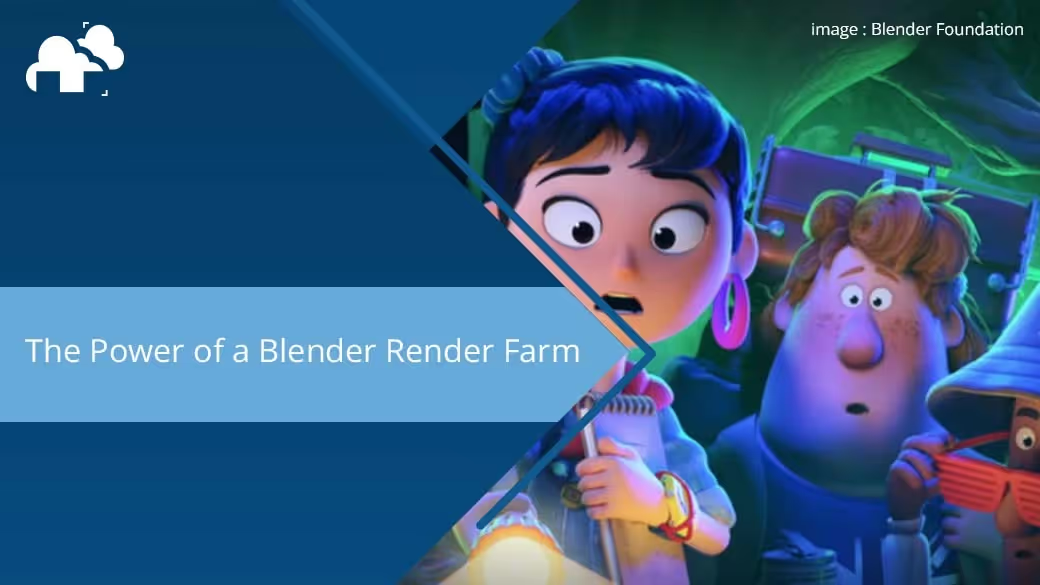
Blender has increasingly become a go-to software for 3D artists, not only for its robust feature set but also for its seamless integration with Blender render farms. A Blender render farm allows for distributed computing, reducing the time it takes to render complex scenes or animations. Here’s why Blender stands out as an ideal tool for render farms, and why using a Blender render farm can transform your workflow.
One of the most compelling reasons to choose a Blender render farm is that Blender is completely free. Commercial software licenses can be a significant expense, particularly for large-scale rendering operations where multiple instances of software are needed. With Blender, there’s no licensing fee, making it an extremely cost-effective solution for both small studios and massive render farm services.
This free nature also means that Blender render farms can update to the latest version of the software immediately. There’s no waiting period or licensing complications, which eliminates the need to manage paid software structures. The ability to instantly access new features, optimizations, and bug fixes from the Blender Foundation ensures that Blender render farms can render projects faster and more efficiently.
VFX Rendering shares their Top 5 Blender render farms in this video:
Another strong advantage of Blender is how it handles addons in a Blender render farm environment. Many of Blender’s addons, especially those that affect UI or workflow, do not need to be installed on the render farm itself. This makes the rendering process smoother because the core scene files and dependencies are often all that’s required for the Blender render farm to execute the render.
Addons like Node Wrangler or Texel Density Checker (useful for maintaining consistent texture detail across models) enhance the artist’s workflow without complicating the rendering process. As long as the core .blend file is well-prepared, the Blender render farm won’t need the addons, reducing compatibility issues and keeping the render process streamlined.
Blender’s Geometry Nodes feature has been revolutionary in reducing dependency on third-party addons, which is particularly beneficial when working with a Blender render farm. Procedural generation of effects, environment creation, and object scattering are all handled natively within Blender. This means you don’t have to worry about whether the Blender render farm supports external plugins because everything is processed internally by Blender.
This feature is a huge win for those using a Blender render farm because it eliminates the hassle of managing addon compatibility or installation across the render farm’s many nodes. Since Geometry Nodes are part of Blender itself, as long as the Blender render farm runs a compatible version of Blender, the procedural effects will render correctly.
If you’re unfamiliar with what Geometry Nodes can do, check out TopChannel1on1’s video on the subject: https://youtu.be/9u3WysVz7Ds?si=xlu2Bun3q_p_gvO8
One of the more challenging aspects of working with render farms is ensuring that all dependencies, like textures and assets, are correctly packaged before submission. With Blender, automating the checking and relinking of dependencies for a Blender render farm is straightforward.
Blender offers built-in features like the External Data menu, which allows users to pack all external data into the .blend file. This ensures that when the file is uploaded to a Blender render farm, all necessary data is included. This avoids errors like missing textures or broken links that can cause failed renders.
For more advanced setups, there are Blender addons like Blend Files Link Manager, which can further automate the process, checking for any broken links and relinking them before upload. This makes using a Blender render farm smoother and ensures you aren’t wasting time troubleshooting file errors.
Some render farm services provide plugins that do this for you. Here’s how our very own renderBeamer handles Blender projects:
Blender’s Cycles render engine is one of the reasons why using a Blender render farm is so efficient. Cycles is fully integrated into Blender and is optimized for both CPU and GPU rendering, allowing it to take full advantage of distributed rendering in a Blender render farm.
Because Cycles is a native part of Blender, there’s no need to manage or install third-party render engines, which can sometimes complicate the rendering process on a render farm. With Cycles, your Blender render farm can render scenes with advanced features like global illumination, motion blur, and volumetrics without any extra configuration.
The recent updates to Cycles, especially with the introduction of Cycles X, have made it even faster and more efficient when running on a Blender render farm. This translates directly to lower rendering times and higher productivity, a critical aspect of any render farm service.
See Southern Shotty’s rundown of Cycles X’s performance:
In conclusion, Blender’s flexibility, cost-effectiveness, and powerful built-in features make it an ideal tool for both creators and render farm service providers. The fact that Blender is free allows render farms to deploy and update it easily, without worrying about expensive licenses. Blender’s powerful tools like Cycles and Geometry Nodes minimize the need for third-party addons, making the Blender render farm pipeline one of the simplest!.
Additionally, automating the checking and relinking of dependencies for a Blender render farm is straightforward, saving you time and avoiding render errors. All of these factors make Blender the perfect solution for any artist or studio looking to utilize a Blender render farm to enhance their 3D production workflow.
Whether you’re an independent artist or a large studio, using a Blender render farm is a smart, efficient, and cost-effective way to supercharge your rendering process and bring your projects to life faster than ever.